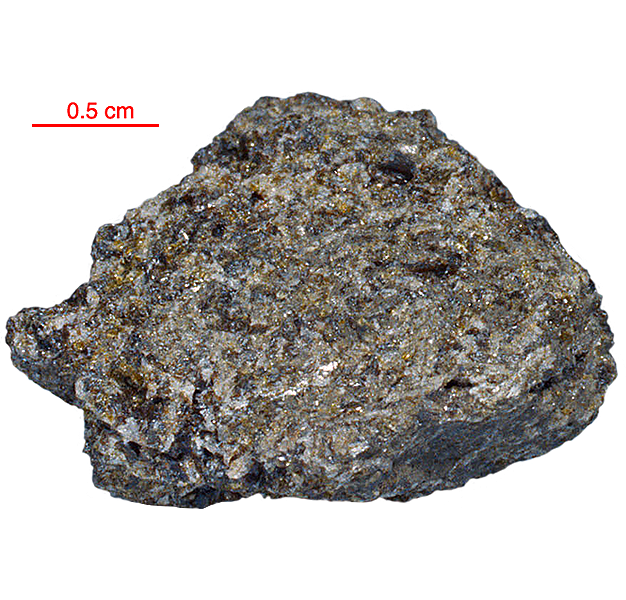
Fact sheet
15641 was collected together with other fragments (15633, 15643 and 15663) in a rake sample. They are grouped together because they are relatively coarse-grained samples of the abundant olivine normative Apollo 15 basalt clan. Most olivine grains are less than 1mm; the larger ones contain silicate melt inclusions. Pyroxene grains are up to 2 mm and somewhat elongate. They are chemically zoned from pigeonite to Fe-rich augite (see rotation 2). Plagioclase grains up to 3mm, poikilitically enclose small pyroxene, otherwise intergrown with pyroxene. Chromite is found in pyroxene and is overgrown with ulvospinel when it is interstitial. Minor phases include cristobalite (see rotation 1), fayalite, ilmenite, troilite, metallic iron and Fe-rich glass.
The sample weighed 6.9 grams before analysis and has not been dated.
Further details of this and other Apollo samples are here: http://curator.jsc.nasa.gov/lunar/
The Apollo 15 landing site was in the Apennine Highlands, and close to Hadley Rille — a long, narrow winding valley. Approximately 76 kg of lunar material, including soil, rock, core-tube and deep-core samples, were returned to Earth.
This mission was the first flight of the Lunar Roving Vehicle which allowed the astronauts to venture further from the Lunar Module than in previous missions. During three periods of extravehicular activity, or EVA, on July 31st, and August 1st and 2nd, Scott and Irwin completed a record 18 hours, 37 minutes of exploration, travelling 17.5 miles, in the first car that humans had ever driven on the Moon.
Apollo 15 was launched on 26 July 1971.






